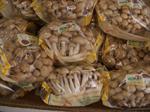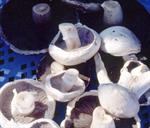 Mushrooms are living things and as such are somewhat unpredictable and variable. The way you treat a mushroom is different from place to place, time to time and according to what you are trying to get from the mushroom. This course aims to teach mushroom growing in a way which will be relevant to any place in the world. It puts aside regional techniques and tries to teach you principles and concepts which can be applied to anywhere.
Mushrooms are living things and as such are somewhat unpredictable and variable. The way you treat a mushroom is different from place to place, time to time and according to what you are trying to get from the mushroom. This course aims to teach mushroom growing in a way which will be relevant to any place in the world. It puts aside regional techniques and tries to teach you principles and concepts which can be applied to anywhere.
-
Keep this in mind as you study
-
Interpret the principles.
-
Don’t simply seek facts, because facts change according to where and when you do something!
CONTENT
There are seven lessons as follows:
1. Introduction
Review of the system of plant identification, distinguishing edible fungi, information/contacts, Classify different varieties of fungi which are commonly eaten.
2. Mushroom Culture
Determine the techniques used in the culture of edible mushrooms (Part A).
3. Spawn Production & Spawning
Determine the techniques used in the culture of edible mushrooms (Part B).
4. Making & Casing Beds
Determine the techniques used in the culture of edible mushrooms
5. Growing Conditions for Mushrooms
Determine the techniques used in the culture of edible mushrooms (Part D).
6. Growing Mushrooms Outside (Pest and Disease Management)
Determine the techniques used in the culture of edible mushrooms (Part E).
7. Harvesting, Storing & Using Mushrooms
Explain the harvesting of a mushroom crop.
Explain the post-harvest treatment of a mushroom crop
8. Special Assignment - Marketing of Mushrooms
Duration: 100 hours
COURSE AIMS
- Classify different varieties of fungi which are commonly eaten
- Understand techniques used in the culture of a wide range of edible mushrooms
- Understand the culture of the Agaricus mushoom in detail
- Explain the harvesting of a mushroom crop
- Explain the post-harvest treatment of a mushroom crop
- Explain marketing strategies for mushrooms
WHAT YOU WILL DO IN THIS COURSE
 Here are just some of things you may be doing:
Here are just some of things you may be doing:
- Compare the scientific with common definitions for a “Mushroom”
- Explain the classification, to genus level, of ten different commercially grown edible fungi
- Produce a labeled illustration of the morphological characteristics which are common to different edible fungi of the genus “Agaricus”
- Compare the physical characteristics of different commercially cultivated edible fungi
- Distinguish edible Agaricus mushrooms from similar, inedible fungal fruiting bodies
- Compile a resource file of sources of information regarding edible fungi, including: *Publication *Suppliers *Industry associations/services
- Determine the preferred conditions for growing two different specified mushroom genra
- Describe the stages in the growing of Agaricus mushrooms
- Develop criteria for selecting growing media, for different genra of edible fungi; including Agaricus
- Describe an appropriate compost for growing of Agaricus bisporus
- Explain how spawn is produced for different genra of edible fungi
- Explain the use of casing in mushroom production
- Compare different methods of growing edible fungi, in your country, including where appropriate: *Outdoor beds *In Caves *In buildings *In trays *In bags *In troughs
- Describe different pests and diseases of mushrooms
- Describe appropriate control methods for different pests and diseases of mushrooms
- Analyse hygiene and exclusion regimes used in mushroom production
- Prepare a production plan, based on supplied specifications, for Agaricus bisporus, including: *Materials required *Equipment required *Work schedule *Cost estimates
- Grow a crop of Agaricus bisporus
- Identify the stages at which Agaricus mushrooms can be harvested
- Explain how mushrooms are harvested
- Develop guidelines to minimise damage to two different types (i.e. genra) of mushrooms during and immediately after harvest
- Describe ways to extend the shelf life of two different mushrooms crops
- Explain different techniques for processing mushrooms
- Produce dried mushrooms from fresh ones
- Analyse industry guidelines for the post-harvest handling of a specified mushroom variety
- Determine the different ways mushrooms are packed for retailing
- Outline industry generic marketing strategies for mushrooms
- Suggest strategies for marketing a separately identified mushroom product (e.g. branded, regional)
What Fungi Can be Commercially Grown as Edible Mushrooms?
This can vary from one country to another. It can depend upon what has potential demand in the market; as well as what facilities and expertise are available to grow the produce.
The following are some of the more likely candidates that you might grow.
Agaricus bisporus
A. bisporus is also known as the “Champignon”. This species may also be known, in some areas, by other species names. Agaricus brunnescens is a former name for A. bisporus, and some references may still use this name. Agaricus hortensis is a synonym that is applied to pure white forms of A. bisporus
The species "Agaricus bitorquis", has some characteristics which make it more desirable than Agaricus bisporus (i.e.: longer shelf life, virus resistance and resists bruising). These characteristics have led to the species Agaricus bitorquis being used in breeding programs aimed at producing crops more suited to the fresh market.
There are a range of other edible fungi which are often referred to as mushrooms. Cultivation of these fungi is still a developing industry in many countries, and there is certainly scope for commercial production of specialty mushrooms. Some are already economic crops in some countries.
Coprinus fimetarius
Suited to freezing, canning and drying. It has excellent flavour and potential as a novelty vegetable. Whilst many species of Coprinus are highly ephemeral (they have an extremely short shelf life), C. fimentarius has the potential as a cultivated mushroom. It is easy to grow and can quickly produce good commercial yields.
Flammulina velutipes
This fungus is commonly known by names such as ‘Winter Mushroom’, ‘Velvet Stem’ and ‘Velvet Foot’. Cultivated Japanese varieties are known as Enoki and Enokitake, but bear little resemblance to wild populations. Whereas wild ones are dark in colour, the cultivated Japanese varieties are grown in low-light conditions and have pale flesh and skin.
This mushroom fruits in cold conditions. Fruiting bodies are small, but delicious. This mushroom has been eaten for centuries in parts of Asia. It grows naturally on wood and can be cultivated on sawdust.
Lentinus edodes
Lentinus edodes, the Shiitake mushroom, is the most important cultivated mushroom in Japan. It is grown on logs of Fagaceae trees (eg: Oaks) and various other trees. The shiitake mushroom is said to possess many health benefits, including the presence of many polysaccharides and polysaccharide-protein complexes that have been isolated and utilised for therapeutic purposes (it has been reported as promoting health due to immunity stimulating properties against cancer, viral infection and high cholesterol). This mushroom is usually sold fresh or dried. There is potential for commercial shiitake mushroom cultivation, although many markets have high quality standards that must be met.
Pleurotus spp.
Several species of this genus are edible and have the potential for cultivation commercially. Pleurotus ostreatus is perhaps the most commonly cultivated species, known as the oyster mushroom, due to its appearance. The oyster mushroom naturally grows on dead wood, but can be cultivated on any cellulose material. Wood shavings, cellulose fibre, and waste hulls from agriculture are commonly used. This mushroom can even be cultivated on toilet rolls!
Stropharia rugoso-annulata
This species of mushroom, sometimes known as the ‘Garden Giant’ has been grown commercially in Germany, and grows wild in parts of Europe. It is cheap and easy to grow, but yields are variable.
It is not generally suited to commercial production, but is well suited to outdoor culture in the home garden. Indoor fruitings are possible but the King Stropharia requires an unsterile casing to stimulate mushroom development and is slow to fruit.
Volvariella volvacea
The edible Straw Mushroom originates from the tropics and sub-tropics, and has been cultivated and eaten for centuries in China and other Asian countries. This mushroom is traditionally cultivated on fermented rice straw. Due to the nature of traditional cultivation, yields have typically been low and variable. Modern cultivation practices utilising industrial waste from cotton processing have allowed increased yields and further development of the Straw Mushroom industry.
Auricularia auricula
This is one of the ‘jelly fungus,’ and bears the common name ‘Judas’ Ear’, based on a myth that it grew, as a result of a curse, on the tree that Judas hung himself on. It was eaten in ancient China, and cultivated on logs throughout Asia. Species of Auricularia mushroom can commonly be found dried in Asian stores. There are many other cultivated fungi throughout the world. Further details can be supplied by the school if you require them.